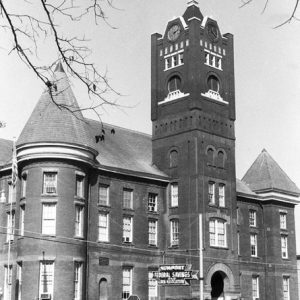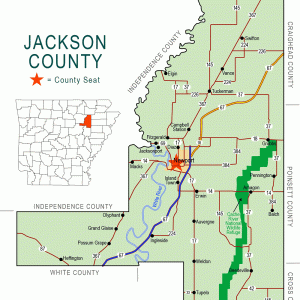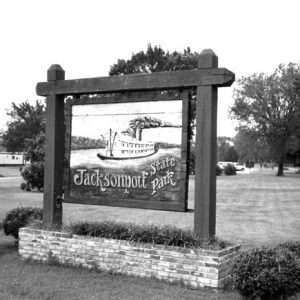calsfoundation@cals.org
Jackson County
| Region: | Northeast |
| County Seat: | Newport |
| Established: | November 5, 1829 |
| Parent County: | Independence |
| Population: | 16,755 (2020 Census) |
| Area: | 633.61 square miles (2020 Census) |
| Historical Population as per the U.S. Census: | |||||||||
|
1810 |
1820 |
1830 |
1840 |
1850 |
1860 |
1870 |
1880 |
1890 |
1900 |
|
– |
– |
333 |
1,540 |
3,086 |
10,493 |
7,268 |
10,877 |
15,179 |
18,383 |
|
1910 |
1920 |
1930 |
1940 |
1950 |
1960 |
1970 |
1980 |
1990 |
2000 |
|
23,501 |
25,446 |
27,943 |
26,427 |
25,912 |
22,843 |
20,452 |
21,646 |
18,944 |
18,418 |
|
2010 |
2020 |
|
|
|
|
|
|
|
|
|
17,997 |
16,755 |
|
|
|
|
|
|
|
|
| Population Characteristics as per the 2020 U.S. Census: | ||
| White |
12,890 |
76.9% |
| African American |
2,786 |
16.6% |
| American Indian |
47 |
0.3% |
| Asian |
63 |
0.4% |
| Native Hawaiian or Other Pacific Islander |
4 |
0.0% |
| Some Other Race |
267 |
1.6% |
| Two or More Races |
698 |
4.2% |
| Hispanic Origin (may be of any race) |
461 |
2.8% |
| Population Density |
26.4 people per square mile |
|
| Median Household Income (2019) |
$34,109 |
|
| Per Capita Income (2015–2019) |
$20,295 |
|
| Percent of Population below Poverty Line (2019) |
24.4% |
|
Jackson County is in northeastern Arkansas. Although the land rises somewhat in the west, most of the county is flat, low river bottom. Since the late 1800s, the county’s largest town has been Newport, the county seat.
European Exploration and Settlement
Native Americans called this area home as far back as 10,000 years ago. Evidence of their existence is found in the nearly 600 archaeological sites known to exist in Jackson County. Some researchers have claimed that famed explorer Hernando de Soto passed through the area that would become Jacksonport and that he spent the winter of 1541–42 there , though current research places his winter camp on the lower Arkansas River. French and Spanish trappers hunted in what would become Jackson County around 1760 to1800.
Louisiana Purchase through Early Statehood
Early explorer Obediah Cartwright and his Indian guide, Leauteau, explored in 1822 what would later be known as Jack’s Creek at the future town of Jacksonport.
Jackson County was created on November 5, 1829, with land taken from Independence County. It was named for Andrew Jackson, the War of 1812 hero who had, by the time of the county’s creation, been elected president of the United States.
Because no towns existed in Jackson County, the first county seat was at the house of early pioneer Thomas Wideman, the house being about centrally located in the county. In 1832, it was moved two miles to Litchfield, the first permanent settlement organized in the county. It was named for David Litchfield, former member of the General Assembly from Independence County.
A ferry was established in 1836 on the Black River by Robert Dunbar, who owned a 3,000-acre plantation he named Elgin. There were two ferries on the White River at Newport, owned by Rowland Tidwell and Harry Curran. Newport was settled in 1835 but did not flourish by any means. Noadiah Marsh and Aaron W. Lyon developed and promoted Elizabeth (sometimes called Elizabethtown) in November 1837. This settlement, which was situated on the White River, was the busiest town in the county at the time.
Riverboats, which began running on the White River in 1831, helped Elizabeth thrive as a river port. In addition, the town was near an established east-west road that passed through the county. In 1839, the county seat moved to Elizabeth.
Until about 1840, Newport struggled to establish itself, but those efforts failed, and Newport was abandoned for several years. Jacksonport, settled by Thomas Todd Tunstall, was well established before Newport faded, the latter town not being able to overtake the former. Located just south of the confluence of the Black and White rivers, Jacksonport figured prominently in the county’s history for many years. In the early 1850s, another river town, Grand Glaise (also spelled “Grand Glaize”), was settled on the west bank of the White River ten miles south of Elizabeth.
Farther south on the White, the town of Augusta was laid out in an area known as Chickasaw Crossing. (When Woodruff County was created in 1862, Augusta and other southern lands of Jackson County were transferred to the new county.) In 1852, the Jackson County seat was moved from Elizabeth to Augusta. Elizabeth had the misfortune of being in the wrong area near the White River. Old Elizabeth, as it was later known, was taken by the river in later years. As the river changed course, its banks, where the community was built, eroded into the river so that later no evidence of Elizabeth existed except in records.
With the demise of Elizabeth and the slumbering of Newport, Jacksonport (first incorporated in 1852) soon became prominent, especially in regard to river travel. The county seat was moved to Jacksonport in 1853, just one year after it had been located at Augusta. Much of the year, Jacksonport was the northernmost shipping point on the White River.
Civil War through the Gilded Age
Jackson County was an agricultural region, and as such, there were a number of plantations, some of which owned large numbers of slaves. The continuation of slavery was deemed so necessary that the citizens were determined to preserve it. Because war had been anticipated, the county raised a company of soldiers even before Arkansas seceded from the Union. On May 5, 1861, the Jackson Guards left Jacksonport, soon to be Company G of the First Arkansas Infantry. It was the state’s northernmost company at the time. They were the first troops from Arkansas to head to war when they crossed the Mississippi River on their way to Virginia, where they were mustered into Confederate service on May 19.
The county included 7,957 white citizens in 1860 along with 2,535 enslaved African Americans and a single free African American. J. H. Patterson represented the county at the 1861 Secession Convention. He owned at least sixteen enslaved people at the time of the 1860 federal census.
In the county, the conflict amounted to little more than skirmishes. Nevertheless, Northern and Southern troops occupied the county at various times, with Jacksonport being a key city. Confusion ruled, and for several years, residents struggled to survive. Engagements fought in the county include the Skirmish at Stewart’s Plantation, the Skirmish at Cache River Bridge, the Skirmish at Waddell’s Farm, the Attack on Jacksonport, the Skirmish at Jacksonport, the Affair at Galloway’s Farm, and the Affair at Jacksonport. The steamer Cambridge sank near Grand Glaise in 1862 while transporting members of the Seventeenth Arkansas Infantry. Multiple soldiers and passengers died in the accident. Jacksonport resident Lucien Gause led a Confederate brigade late in the war, including at the Engagement at Jenkins’ Ferry.
Jackson County played a prominent role in the end of the Civil War. In stark contrast to the excited soldiers who left in May 1861, 6,000 Confederate troops assembled in Jacksonport as they surrendered on June 5, 1865.
Jacksonport’s grand courthouse, planned before the war, was built in 1869. The old river town enjoyed prosperity until the Cairo and Fulton Railroad’s north and south rail lines met at the White River at old Newport in 1873. A revived Newport grew quickly, providing much-needed services for the railroad, and Jacksonport began declining. In 1891, Newport waged a successful effort to have the county seat moved from Jacksonport.
Campbell Station, Tuckerman, Swifton, and Diaz also developed around 1873 as a result of the Iron Mountain Railroad. Grubbs, Weldon, Tupelo, Amagon, Shoffner, and Auvergne were founded along other railroads running through the county.
The small community of Olyphant was the scene of one of the last train robberies in Arkansas. Eight men hijacked Iron Mountain passenger train No. 51 on November 3, 1893, and robbed its passengers. Conductor W. P. McNally died in a volley of gunfire. After being captured, the robbers were found guilty, and three were sentenced to hang in 1894—the only known multiple execution in Jackson County.
There has long been a black community in Jackson County, especially after Newport was organized in 1875 and African Americans began moving from the farms to cities. A number of black churches, stores, professional people, schools, and a newspaper could be found in the county. “Aunt Caroline” Dye, who died in 1918, was a black woman known throughout the United States for her seer abilities. She was so well known that Memphis bluesman W. C. Handy wrote a song about her, 1923’s “Sundown Blues.”
A number of incidents of extrajudicial racial violence took place in the county in the late nineteenth and early twentieth centuries. Lynched in 1885, Dan Hunley lost his life after allegedly attacking a white girl. Howard Davis was lynched after the murder of a law enforcement officer in 1914. Four years later, Willis Robinson lost his life at the hands of a mob after killing one police officer and wounding a second. Mobs also lynched white men for crimes committed in the county, including two men killed in 1880.
Early Twentieth Century
The residents of Jackson County were pulled into World War I just like the rest of the country. Men joined the war effort, and the local citizens made important contributions, too. Local patriotism resulted in the spirited participation of men, women, and children. Some of those killed during the war were given elaborate funerals.
In the years that followed, which included the years of the Great Depression, Jackson County residents dug in deep to survive the lean years. The nationwide financial misfortunes put a strain on everyone in the county, yet residents survived it by living as they always had. Government programs helped give jobs to men and women who needed them. Other aid also helped the local citizens survive the Depression.
World War II through the Faubus Era
World War II brought hundreds of people to Newport when the U.S. government built an Army Air Forces base east of Newport in 1942 at a cost of $13 million. Officially known as the Newport Air Field, it was occupied for about two years by the Army Air Force, followed by the U.S. Marine Corps, who named it the Marine Corps Air Facility. After the withdrawal of Marine units, the base served as a prisoner-of war-camp for captured Germans for a short period. The base and accompanying farmland (totaling almost 2,600 acres) were deeded to the city in 1947. The facility ultimately became the Newport Industrial Park, which is still in use.
Under the capable leadership of Newport school superintendent John W. Mullins, the town’s schools had an ultimately successful transition from segregation to integration. Older African American students were served by the W. F. Branch High School, and the district adopted a Freedom of Choice plan in 1965 to allow students to attend the school of their choice. This plan was eventually abandoned in the face of federal opposition in the late 1960s. Branch High School closed in 1970, and all the students were transferred to Newport High School. The transition was not easy, as the new students struggled to fit into the school. The African American students held a demonstration that eventually led to some changes at Newport High.
Modern Era
Today, Jackson County’s leading industry is agriculture, with rice and soybeans being the most widely grown crops. But the county is also home to several solid industries. Norandal has been a longtime manufacturer of aluminum foil products, and Medallion Foods (snack chips) and Delta Manufacturing (utility trailers) also have a strong presence. Several successful smaller manufacturers also operate in the county. Troop B of the Arkansas State Police is based in Jackson County.
In January 1998, the state opened two maximum-security prisons in Newport: the Scott Grimes Correctional Facility (for young males) and the Ronald McPherson Correctional Facility (for females), housing a total of about 1,700 inmates.
Modern-day Jackson County is home to two school districts, the Newport Special School District and the Jackson County School District. The county is also home to Arkansas State University–Newport.
Attractions
Jacksonport State Park was established in 1965. Saved by the Jackson County Historical Society in 1962, the old courthouse at Jacksonport is one of the park’s two main attractions. It and the 1931 Mary Woods No. 2 paddlewheel boat were restored to their original conditions after a 1997 tornado heavily damaged both (though the boat sank twice and was eventually deemed not salvageable).
Jackson County has many sites on the National Register of Historic Places. The 1892 Jackson County Courthouse in Newport and the Jacksonport State Park complex are among the most well-known listings.
The White River Monster reportedly lives in the stream near Newport.
The King of Clubs and the Silver Moon Club roadhouses brought many top entertainers to the county.
Famous Residents
Several Jackson County natives and citizens have gained stature. Swifton is the home of National Baseball Hall of Fame member George Kell, and Tuckerman was the hometown of Boston Celtics basketball player and 1964 Olympic gold medalist Jim “Bad News” Barnes. Academy Award–winning actress Mary Steenburgen and longtime entertainer Sonny Burgess are Newport natives. The late Joe E. Lewis (guitarist for Conway Twitty’s band) and Jack Nance (manager for the Jackson Five, among others) were also Newport natives. Legendary blues musician Frank Frost was from Auvergne, while John David McLain, artistic director of the Cincinnati Ballet, grew up in Newport. Pickens W. Black Sr., a son of slaves, amassed significant land holdings, and his son, Pickens Black Jr., was one of the first black private pilots from Arkansas and was himself a prominent leader.
Arkansas governor Mike Beebe was born in Jackson County. Judge Robert Emmett Jeffery, who had a law practice in Newport, was the U.S. ambassador to Uruguay from 1915 to 1921, and Kaneaster Hodges Jr., who was born in Newport, was a U.S. senator from 1977 to 1979. Former Newport resident Harmon L. Remmel was a leader in the Republican Party in the early twentieth century. Business leader and Walmart Inc. founder Sam Walton developed his retail ideas while operating his Ben Franklin Store in Newport from 1945 to 1950. Other twentieth-century Jackson County residents were Elizabeth Gregg Patterson, a well-known author, and Josephine Graham, a nationally known painter. Broadcaster Steve Stephens was a native of Jackson County.
For additional information:
Centennial History of Newport, Arkansas, 1875–1975. Newport, AR: Jackson County Historical Society, 1975.
“Dedication of Civil War Markers and Jacksonport State Park.” Newport, AR: Evans Press, 1965.
“Jackson County Proud.” Program of the 1988 Follies. Newport, AR: Craig Printing Company.
Newport Daily Independent. Special edition. August 11, 1975.
Stockard, Sallie Walker. History of Lawrence, Jackson, Independence, and Stone Counties of the Third Judicial District of Arkansas. Little Rock: Arkansas Democrat Co., 1904.
The Stream of History. Newport, AR: Jackson County Historical Society (1964–).
Watson, Lady Elizabeth. Fight and Survive: A History of Jackson County, Arkansas, in the Civil War. Rev. ed. Newport, AR: Jackson County Historical Society, 1996.
Robert D. Craig
Kennett, Missouri
Revised 2022, David Sesser, Southeastern Louisiana University
 Jackson County Courthouse
Jackson County Courthouse  Jackson County Courthouse
Jackson County Courthouse  Jackson County Map
Jackson County Map  President Andrew Jackson
President Andrew Jackson  Jacksonport State Park
Jacksonport State Park  King of Clubs
King of Clubs  Steamboats Illustration
Steamboats Illustration  Surrounded Hill School
Surrounded Hill School  Swifton
Swifton  Swifton Sign
Swifton Sign 



Comments
No comments on this entry yet.